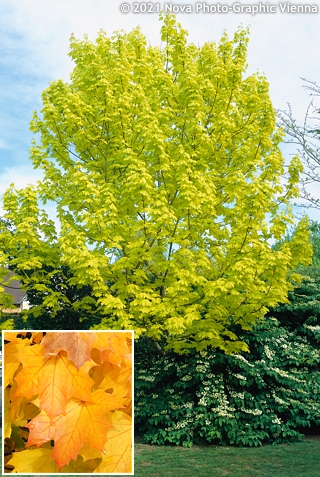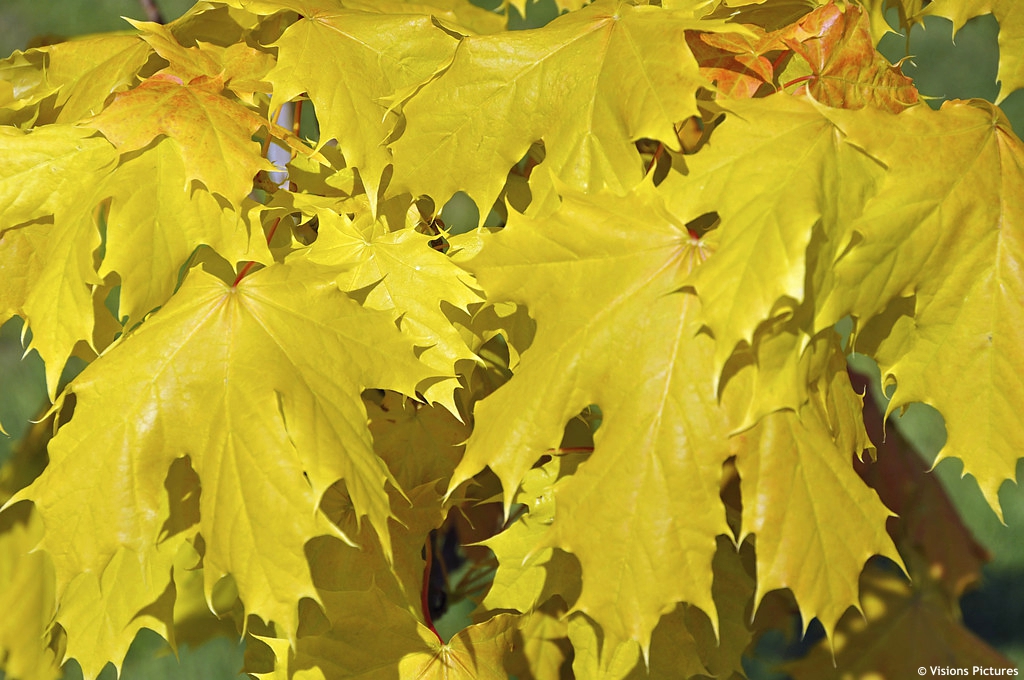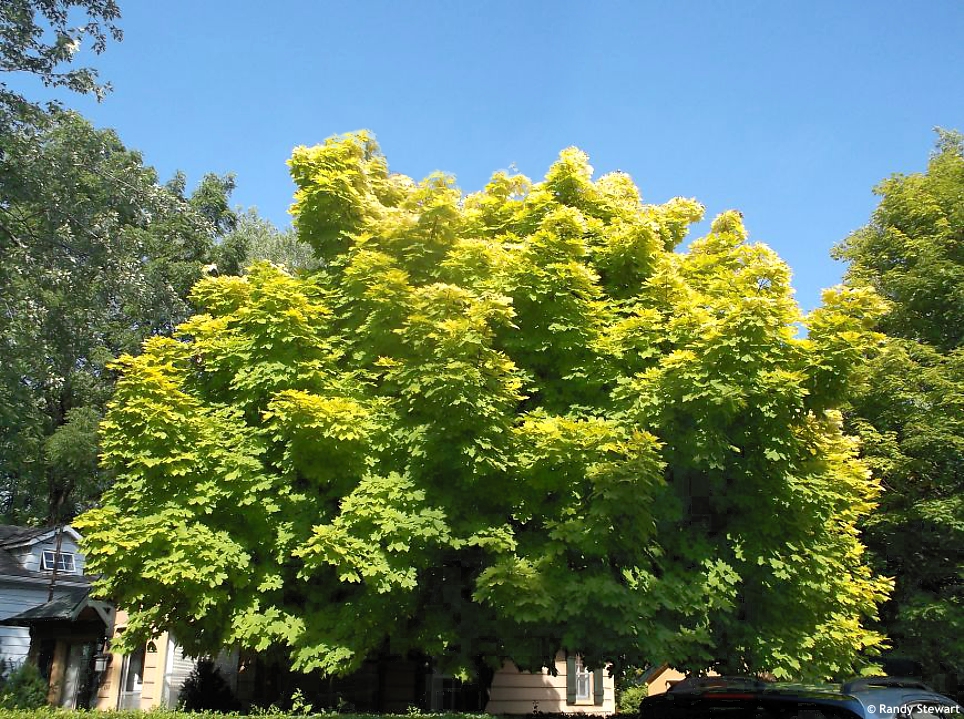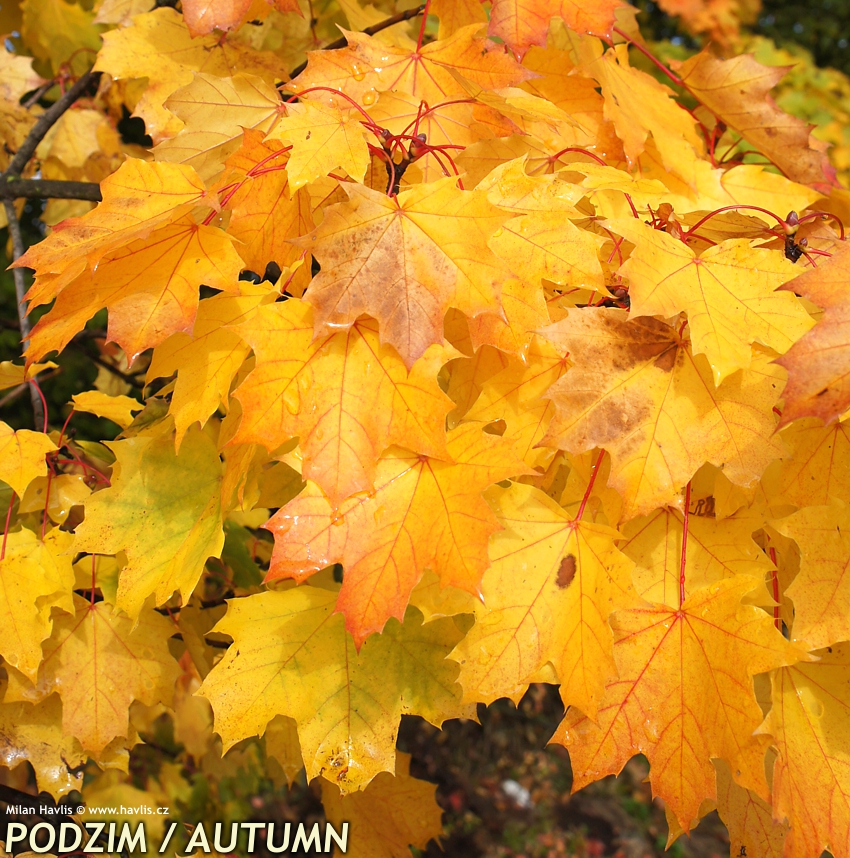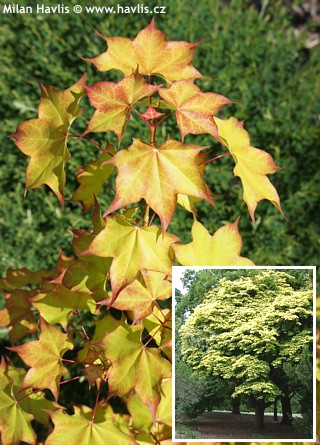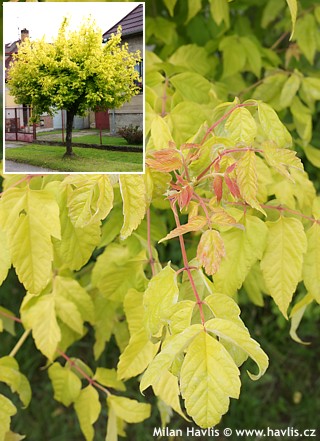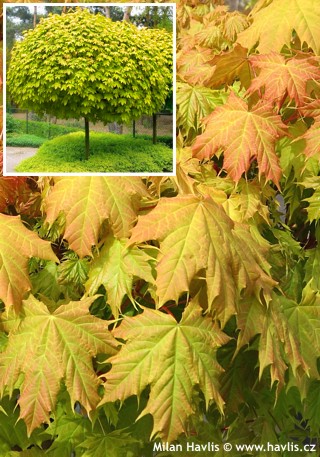Acer platanoides 'Prigo' PRINCETON GOLD Norway maple
Acer
Norway maple is a native European tree commonly cultivated in countries and regions with harsh winters. It is one of the most common street and park in Czech and Slovak republics. Its tolerance against pollution, low winter temperatures, and vigorous growth made it a useful tree for almost all places where rapid growth is required for screening and as a noise barrier. Its seedling may be variable which is something breeders are waiting for, no wonder we have a wide range of attractive varieties of this tough tree.
PRINCETON GOLD is a Norway maple variety found and selected by an American botanist and breeder William Flemmer III (1922-2007) who during early 1980’s collected seeds of street trees and grew them in his trial beds in anticipation of a mutation. A breakthrough came around 1983 when one seedling showed extremely yellow foliage colour which did not suffer from scorching and the plant proved vigorous and healthy enough to be considered a new variety. A US patent No. PP6727P was granted in 1989.
PRINCETON GOLD Norway maple makes deciduous, 10-15 cm large, broadly palmate leaves which emerge bright yellow in spring and turn chartreuse in summer. In autumn the tree can provide two different shows: if grown in common (neutral to alkaline) soil, as the green pigment disappears, they reveal an even lighter shade of banana yellow which perfectly contrasts with maroon veins and stalks. But if grown in highly acidic soil, the leaves will turn several shades of golden, amber orange, and scarlet red. In spring appear upright clusters of small, yellow-green flowers. Its foliage colour makes any landscape look more cheerful and happier.
It grows fast forming a densely branched canopy which is rather upright when young and gets rounded with age. Pruning is usually not required. Still, in narrow streets pollarding is quite common: in late autumn or winter all branches are cut off, leaving only a small head at the top of the trunk. Such action will encourage rapid and vigorous growth of new branches with large leaves and the tree is easily maintained much smaller.
Norway maple grows in any well-drained soil in full sun and is fully hardy to -40 °C (USDA zone 3). Lower pH will ensure richer autumn colouring. Pest and disease free.
Last update 08-10-2021

































